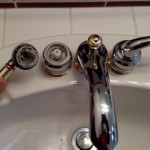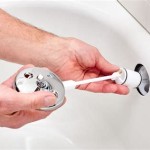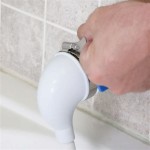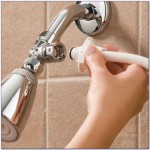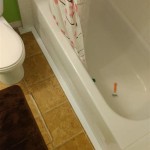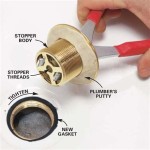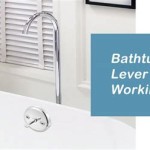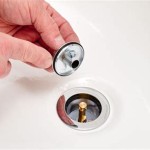How to Fill a Portable Bathtub
Portable bathtubs offer a flexible bathing solution for individuals with limited space, mobility issues, or those seeking a more economical alternative to permanent fixtures. These bathtubs, typically constructed from lightweight materials like PVC or reinforced plastic, can be easily stored and deployed as needed. The process of filling a portable bathtub requires careful consideration to ensure safety, prevent leaks, and maintain a comfortable bathing temperature. This article details the necessary steps and precautions for successfully filling a portable bathtub.
Before initiating the filling process, it is critical to assess the bathtub's structural integrity. Inspect the tub for any signs of damage, such as cracks, tears, or weakened seams. If damage is detected, the tub should not be used until repaired or replaced. A compromised structure can lead to leaks, instability, and potential injuries. Ensuring the bathtub is placed on a level and stable surface is equally essential. Uneven surfaces can cause the tub to tilt, potentially spilling water or causing structural stress. A rubber mat or other non-slip material should be placed underneath the tub to prevent slippage and provide additional stability.
Selecting the appropriate water source and delivery method is also crucial. Most portable bathtubs are filled using a standard bathroom faucet. The distance between the faucet and the bathtub, as well as the faucet's design, will influence the choice of filling method. A flexible hose attachment is often necessary to bridge the gap between the faucet and the bathtub. Consider the water heater capacity to avoid running out of hot water midway through the filling process. Consistent hot water supply is crucial for a comfortable and relaxing bath.
Preparing the Bathtub and Surrounding Area
Prior to filling the portable bathtub, thorough preparation of the surrounding area is essential to minimize the risk of water damage and ensure a safe bathing environment. First, identify a suitable location for the bathtub, preferably a bathroom or area with a drain nearby. This is crucial for safely draining the tub after use. If a drain is not readily accessible, consider using a water pump or siphon to remove the water. Lay down a protective layer, such as a large towel or plastic sheet, beneath and around the bathtub. This will prevent water from seeping into the flooring and causing damage. Pay particular attention to areas where water is likely to splash, such as around the faucet and edges of the tub.
Inspect the drain plug of the portable bathtub to ensure it is securely in place. A loose or improperly fitted drain plug is a primary cause of leaks. If the drain plug is removable, check for any signs of wear or damage. A damaged drain plug should be replaced before filling the tub. Some portable bathtubs feature an overflow drain, which prevents the tub from overfilling. Verify that the overflow drain is clear of any obstructions and functioning correctly. In the absence of an overflow drain, it is imperative to monitor the water level closely during the filling process to avoid overfilling.
Gather all necessary bathing supplies, such as soap, shampoo, towels, and washcloths, and place them within easy reach of the bathtub. This will minimize the need to reach for items while in the tub, reducing the risk of slipping or spilling water. Additionally, ensure adequate lighting in the bathing area. Poor lighting can increase the risk of accidents. Consider installing a waterproof light fixture or using a portable lamp to improve visibility.
Connecting the Water Source and Controlling Water Temperature
Connecting the water source to the portable bathtub requires careful attention to detail to prevent leaks and ensure a smooth filling process. The most common method involves using a flexible hose attachment that connects to the bathroom faucet. Measure the distance between the faucet and the bathtub to determine the appropriate length of the hose. Choose a hose made from durable, non-toxic materials that are specifically designed for water use. Securely attach the hose to the faucet using appropriate fittings and clamps. Ensure that the connection is tight and leak-proof. Run the water briefly to check for any leaks before proceeding. If leaks are detected, tighten the connections or replace the fittings as needed.
Controlling the water temperature is paramount for a safe and comfortable bathing experience. Before filling the bathtub, test the water temperature at the faucet. The ideal bathing temperature is typically between 100°F (38°C) and 104°F (40°C). Use a thermometer to accurately measure the water temperature. Gradually adjust the hot and cold water taps until the desired temperature is achieved. It is crucial to avoid filling the bathtub with excessively hot water, as this can cause burns or scalding. Once the desired temperature is reached, maintain a consistent flow of water to prevent temperature fluctuations during the filling process. Monitor the water temperature periodically to ensure it remains within the safe range.
When filling the portable bathtub, direct the flow of water away from sensitive areas, such as the face and eyes. Avoid splashing water onto electrical outlets or appliances. Consider using a diffuser attachment on the end of the hose to soften the flow of water and prevent splashing. Fill the bathtub to the desired water level, typically about two-thirds full. Overfilling the bathtub can increase the risk of spills and make it difficult to enter and exit the tub safely. Once the bathtub is filled, double-check the drain plug and overflow drain to ensure they are functioning correctly. Make any necessary adjustments to maintain a consistent water level and prevent leaks. Regularly check the surrounding area for any signs of water damage and address them promptly.
Safety Measures During and After Filling
Maintaining a safe bathing environment requires vigilance both during and after the filling process. Install grab bars or handrails near the portable bathtub to provide support and assistance when entering and exiting the tub. These safety features are particularly important for individuals with mobility issues or balance problems. Place a non-slip mat inside the bathtub to prevent slipping and falling. The mat should be made from a durable, non-toxic material that provides adequate traction. Supervise children and individuals with cognitive impairments closely while they are using the portable bathtub. Never leave them unattended, even for a short period of time. Be aware of potential hazards, such as hot water, slippery surfaces, and electrical appliances.
After bathing, drain the portable bathtub promptly to prevent the growth of bacteria and mold. Remove the drain plug and allow the water to drain completely. If a drain is not readily accessible, use a water pump or siphon to remove the water. Thoroughly clean the bathtub with a mild soap and water solution to remove any soap scum or residue. Rinse the bathtub thoroughly with clean water and allow it to air dry completely before storing it. Store the portable bathtub in a dry, well-ventilated area to prevent the growth of mold and mildew. Follow the manufacturer's instructions for cleaning and storing the bathtub.
Regularly inspect the portable bathtub for any signs of wear or damage. Check the seams, drain plug, and hose for leaks or cracks. Replace any damaged components immediately. Proper maintenance and care will extend the life of the portable bathtub and ensure its continued safety and functionality. Be mindful of the weight capacity of the portable bathtub. Exceeding the weight limit can cause structural damage and increase the risk of collapse. Consult the manufacturer's instructions for the maximum weight capacity. Dispose of the drainage water responsibly. Avoid draining the water into areas where it can damage property or contaminate the environment. Consider using a designated drain or sewer connection. By following these safety measures, one can enjoy the benefits of a portable bathtub with minimal risk.

I Bought A Portable Bathtub From

Ez Bathe Inflatable Bathtub

Ez Bathe Inflatable Bathtub

Medical Inflatable Bathtub Geriatricm Bath Kit 75in Pvc Portable Spa W Electric Air Pump Pillow For The Elderly Disabled

Ez Bathe Inflatable Bathtub

Hurber Folding Bathtub Portable Shower Bath Tub For S Or Kids Efficiently Maintaining Temperature Soaking Blue Whale Pattern

Ez Bathe Inflatable Bathtub

Portable Bathtub Singapore Singaporebathtubs Com

Ella Petite 52 In X 28 Acrylic Walk Whirlpool Bathtub White With 2 Piece Fast Fill Faucet Lhs Dual Drain H31672p

Ez Bathe Inflatable Bathtub
Related Posts

